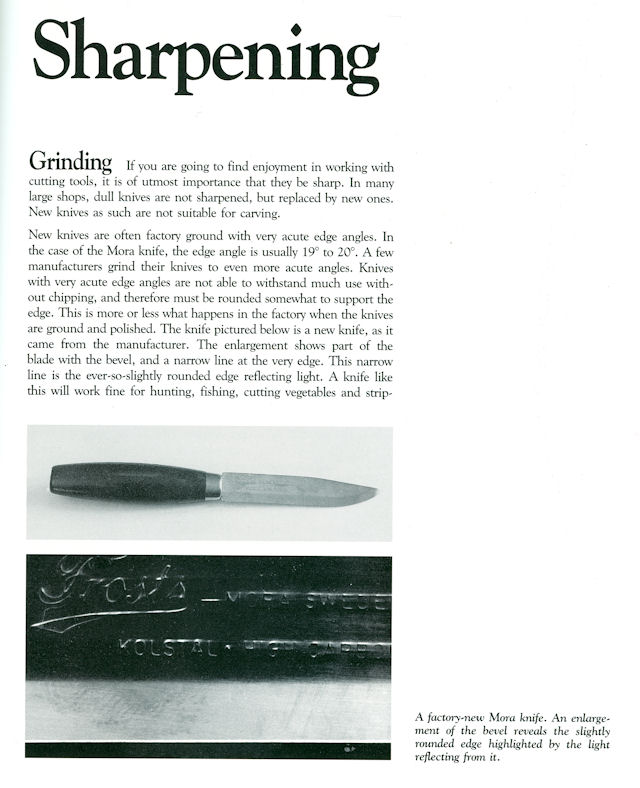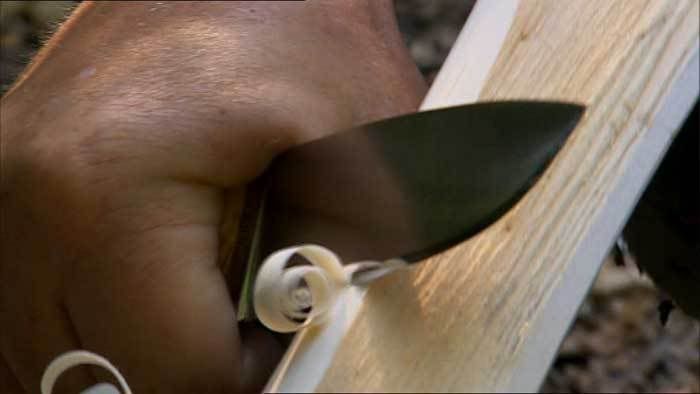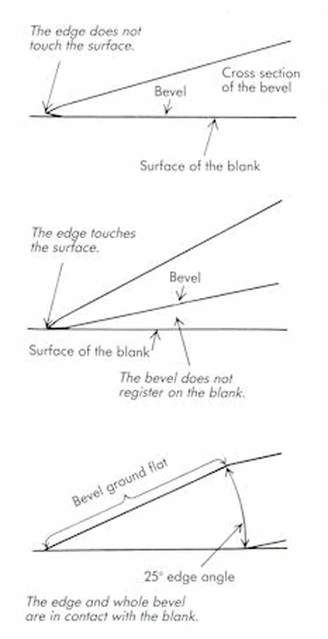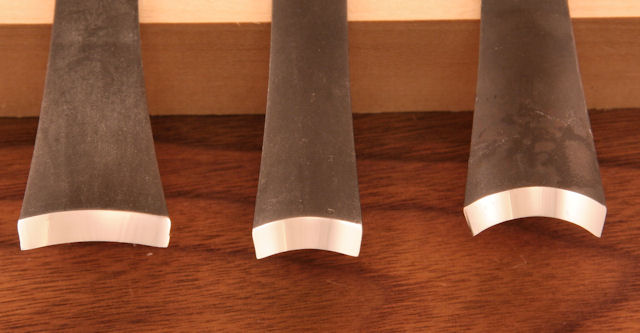...If you sharpen with the blade going into the stone you will repeatedly make and break off pieces of a wire edge...
This fine honing stage on stones with the edge trailing, or backwards, if you will, has completely weirded me out, but it is intriguing. I was reading a thread a few weeks ago (I think on British Blades) about Chef''s steeling technique that was featured in a TV programme. He was steeling a knife with the edge trailing which was totally counter intuitive for me, but many of the contributors to the thread said that this would produce a better edge.
I wonder if my fine honing of the zero ground Mora blades on Japanese Waterstones (4000, 6000, 10,000 grits) with the edge leading is breaking off pieces of the wire edge, as you describe it? I usually check the blade between the grits with a hand lens to ensure that the scratches produced by one grit are on every part of the blade, and have removed the coarser scratches from the previous stone before proceeding to the next finer stone. Then, when Ive finished with the 10,000 grit stone, I occasionally use one of those Norwegian Jasper hones like the one that Spammel has illustrated (only mines a plain black stone, and boy does that puppy take it to the next level!), but more usually after the 10,000 stone, I then strop on leather with compound, with the edge trailing. Do you think that this regime would be tearing sections of the wire edge off as you describe?
I have a beech wood carving project on the go, and all of the zero ground Mora knives have chipped and have blunted (when I say blunted theyre still pretty damned sharp, with the eception of a Clipper which would now make a good butter knife, but not sharp in terms of a good wood carving edge). Maybe Ive reached the limit of the 1095 steel and the type of heat treatment employed, and maybe its time to try some hand forged carving knifes, or maybe I should try fine honing on stones with the edge trailing, before the polishing stage.
Ive had an A2 tool steel convex blade chip in one spot on the blade during this beech wood project, and was beginning to think that it was poor honing that had caused this problem, or the zero ground convex being too thin at the edge, but thinking about it, the chip may have been there when I started using it. I may have used the knife previously on some wood with knots, and chipped it on that. Not sure. And the edge of the A2 steel blade is still very keen indeed, and is still able to remove a good amount of material, and cleanly, and seems to be standing up marginally better than a blade of VG-10 (the VG-10 Ive noticed on previous occasions, strops very well and the edge can be made good with just a few stokes, the A2 by contrast seems somewhat harder than the VG-10 and takes a good deal more stropping).
Incidentally, the A2 steel and VG-10 blades were honed using the ceramic side of a DC4 and then stropped, and not honed on Waterstones as the zero ground Mora knives were, and I haven't stropped either the A2 or VG-10 during this current carving project.
Best regards,
Paul.










